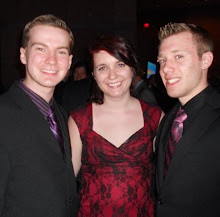 "When you don't want to feel, death can seem like a dream. But seeing death, really seeing it, makes dreaming about it fucking ridiculous,” says Susanna Kaysen, the confused and troubled teenager in James Mangold’s film adaptation of the best-selling memoir appropriately entitled Girl, Interrupted. Almost ten years following its original release, the humorous, dark and enlightening Girl, Interrupted deserves a trip down memory lane into the cold, white halls of Claymoore Hospital where Susanna Kaysen, played by Winona Ryder, encounters a group of patients who transform the daunting outlook of the mental facility into one of acceptance and change.
"When you don't want to feel, death can seem like a dream. But seeing death, really seeing it, makes dreaming about it fucking ridiculous,” says Susanna Kaysen, the confused and troubled teenager in James Mangold’s film adaptation of the best-selling memoir appropriately entitled Girl, Interrupted. Almost ten years following its original release, the humorous, dark and enlightening Girl, Interrupted deserves a trip down memory lane into the cold, white halls of Claymoore Hospital where Susanna Kaysen, played by Winona Ryder, encounters a group of patients who transform the daunting outlook of the mental facility into one of acceptance and change.The opening scenes navigate us into the peculiar, ambivalent world of Susanna with an array of interruptions between flashbacks and the present. The constant interchangeability of time captures one of the many complaints Susanna relays to her therapists. More importantly, Susanna must search for the answer to the ever-changing life question: Am I crazy?
In her voyage to find resolve, Susanna must undertake the harsh realities and opinions of Claymoore staff and determine what she truly knows of her new friends: her fellow patients. Among them, there are distinct personalities including Polly, a naïve and terribly scarred girl, Georgina, her manipulative roommate, Daisy, a self-isolated girl and Lisa, an assertive rebel, captivatingly portrayed by Angelina Jolie.
Exploring their relationships, we see the film’s great craft in shaping the bond of community these girls share with one another. From nicknames to late night escapades, the girls are more like sisters than bedmates and the mental facility becomes more like the summer camp that these girls refuse to reminisce but live.
When the leaves fall and the ground becomes white with snow, the bunk beds transform into beds with distinct smells and name associations. The nurse on duty becomes the familiar friend who has relationship problems and the RN becomes the authority figure who keeps each girl in check. With these characteristics, the notion of mental facility blurs with that of home, a place of comfort, trusted allies and parental figures. If breaking the rules and avoiding the truth earn an extended stay, each woman will prolong her tantrums, lies, alienation and disobedience.
During her first appearance in the film, Lisa, the provocative bad girl, proves her inner conflict’s mastery over herself throughout a shouting match with staff members attempting to restrain her. She screams, “You weak people. You’re all weak people. You’re victims. You people are sick.”
The irony of this exclamation remains unapparent until we progress through the film and learn to understand Lisa's cold, controlling personality in contrast to the insecure, lonely girl who hides inside. We receive a closer view in seeing her side by side, word for word with Susanna.
There comes a point in life, where we have a choice to confront ourselves and see ourselves for who we truly are: stripped of every imaginable mask, naked but in honesty. Sometimes, we can ignore the choice as easily with the turn of a cheek. Other times, it thrusts us in all directions before finally staring at us directly in the face, forcing us to confront it until we give in or admit defeat.
Both Susanna and Lisa confront themselves through each other in one of the great character foils in cinema history. Susanna, a quiet girl who keeps her thoughts locked away in her journal, befriends Lisa, an opinionated straight talker who can do anything but hold her views to herself. As they grow closer, Susanna is seduced by Lisa’s mindset and becomes her latest side-kick. Lisa’s last one, Jamie, committed suicide. Eventually, the girls begin separate paths and their friendship will only allow for one direction.
In addition, the film dispels the stigma of loss that comes with mental illness. Not necessarily in the sense of reality and delusion, but of hope and normalcy. Claymoore commands an empathy with its disturbed inhabitants, who are usually perceived by society as the type cast crazy who makes noises and holds no human emotion.
At one point in the film, the girls rally to Susanna’s defense with strange noises and hollering when Susanna encounters the spouse of a professor she slept with during the patients’ ice cream outing. There’s no lack of emotion here, but an outpouring of love by a band of sisters protecting one of their own.
These girls are not social outcasts because of what they fail to do or don’t have; rather it’s for their very contemplation of what they hold in their possession. It is the boundary they cross to challenge themselves to walk society’s border between sane and insane.
For it’s this idea that the patients at Claymoore must recognize and if they do, walk back out into the world they belong.
This film serves as a helpful reminder of our humanity. Every so often, we forget who we are as people for better or worse as we fall into type casts and stereotypes of those who are different. In the end, nurse, doctor or mental patient, we are still people. Susanna says it best, at one point in the film, “…being crazy is you or me amplified.”
